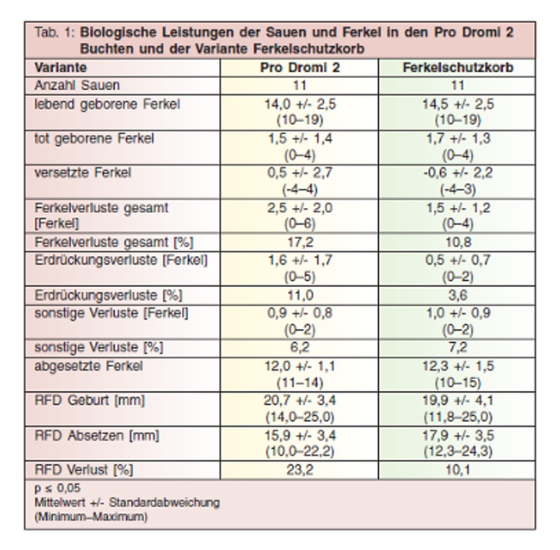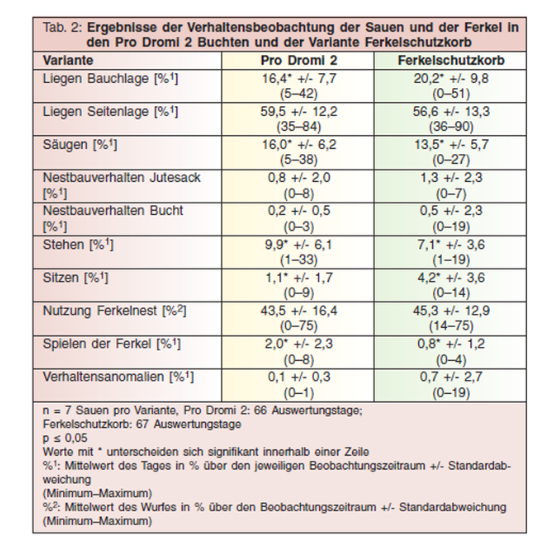17/01/2024
What are the advantages of freewheeling in the Abverkelbucht?
Source: landwirt.com
In a practical trial, the Pro Dromi 2 was compared to a conventional calving pen. Crushing losses were higher. However, stable climate and flooring can reduce these losses. By Patrick SCHALE, Heiko JANSSEN, and Ralf WASSMUTH
Osnabrück University of Applied Sciences and the Lower Saxony Chamber of Agriculture investigated two free-range farrowing pens in the Chamber's own pig barn in Wehnen. Two Pro Dromi 2 farrowing pens (7.07 m²) were compared with two pens with piglet protection cages (3.97 m²) in a diagonal housing arrangement. The sows in the Pro Dromi 2 pens were not restrained, even during the piglets' birth. The suckling period was four weeks in both configurations. In addition to the sows' performance data, the behavior of the sows and piglets was also observed.
Eleven sows per treatment were evaluated for biological performance. No significant differences were found between the treatments. Crushing losses were significantly higher in the Pro Dromi 2 pens than in the pens with piglet protection cages (Table 1). However, it should also be noted that crushing losses in the piglet protection cage were extremely low at 3.6%. At the same time, other losses in the Pro Dromi 2 pens were lower than other losses in the pens with piglet protection cages.
This phenomenon has also been partially described in the literature. In free-range farrowing pens, weaker piglets tend to be crushed, whereas in piglet protection crates, they are more likely to die due to other causes.
Stable climate is crucial
Jute sack well received
Positive effects on behavior


